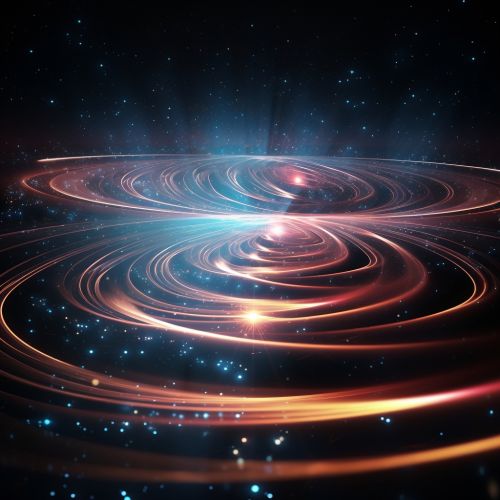De Broglie-Bohm Theory
Introduction
The De Broglie-Bohm theory, also known as the pilot-wave theory, is an interpretation of quantum mechanics that provides a deterministic description of individual particles, while maintaining the statistical predictions of standard quantum mechanics. It was proposed independently by Louis de Broglie in 1927 and David Bohm in 1952.


Historical Background
The De Broglie-Bohm theory has its roots in the early days of quantum mechanics. In 1927, Louis de Broglie proposed a pilot-wave theory as part of his doctoral thesis. However, his ideas were largely ignored in favor of the Copenhagen interpretation, which was more widely accepted at the time. In 1952, David Bohm, unaware of de Broglie's earlier work, independently rediscovered and extended the pilot-wave theory. Bohm's work brought renewed attention to the theory, and it has been further developed and refined by many researchers since then.
Theoretical Foundations
The De Broglie-Bohm theory is based on two main postulates. The first is the existence of a wave function, which evolves according to the Schrodinger equation. The second is the existence of actual particles with well-defined positions, which are guided by the wave function. The wave function, in this interpretation, is seen as a real physical field.
Wave Function
In the De Broglie-Bohm theory, the wave function is a complex-valued function that evolves deterministically according to the Schrodinger equation. The wave function is assumed to be a real physical field, rather than a mere mathematical tool or a representation of knowledge as in some other interpretations of quantum mechanics.
Particle Trajectories
The particles in the De Broglie-Bohm theory have well-defined positions at all times. Their trajectories are determined by the wave function, which acts as a guiding or pilot wave. The velocity of a particle at a given point in space is proportional to the gradient of the phase of the wave function at that point.
Implications and Interpretations
The De Broglie-Bohm theory has several implications that distinguish it from other interpretations of quantum mechanics. One of the most significant is that it provides a deterministic description of individual particles, in contrast to the statistical description provided by standard quantum mechanics.
Determinism
The De Broglie-Bohm theory is deterministic, meaning that the state of a system at a given time determines its state at all future times. This is in contrast to standard quantum mechanics, which is inherently probabilistic.
Nonlocality
The De Broglie-Bohm theory is nonlocal, meaning that the behavior of a particle can depend on the state of the universe at distances arbitrarily far away. This is a consequence of the theory's deterministic nature and the role of the wave function as a guiding field.
Reality of the Wave Function
In the De Broglie-Bohm theory, the wave function is considered to be a real physical field, rather than a mathematical tool or a representation of knowledge. This interpretation of the wave function is a key feature of the theory.
Experimental Tests and Predictions
The De Broglie-Bohm theory makes the same statistical predictions as standard quantum mechanics for all experiments that have been performed to date. However, it also makes additional predictions about the trajectories of individual particles, which could in principle be tested experimentally.
Criticisms and Controversies
Despite its intriguing features, the De Broglie-Bohm theory has been the subject of several criticisms and controversies. Some physicists argue that the theory is unnecessary, since it makes the same statistical predictions as standard quantum mechanics. Others argue that the theory's nonlocality is problematic, since it seems to conflict with the principle of locality in special relativity.
Conclusion
The De Broglie-Bohm theory is a fascinating interpretation of quantum mechanics that offers a deterministic, realist alternative to the standard probabilistic interpretation. While it has not been widely accepted by the physics community, it continues to be the subject of active research and debate.
See Also
Quantum Mechanics Copenhagen Interpretation Schrodinger Equation Special Relativity
